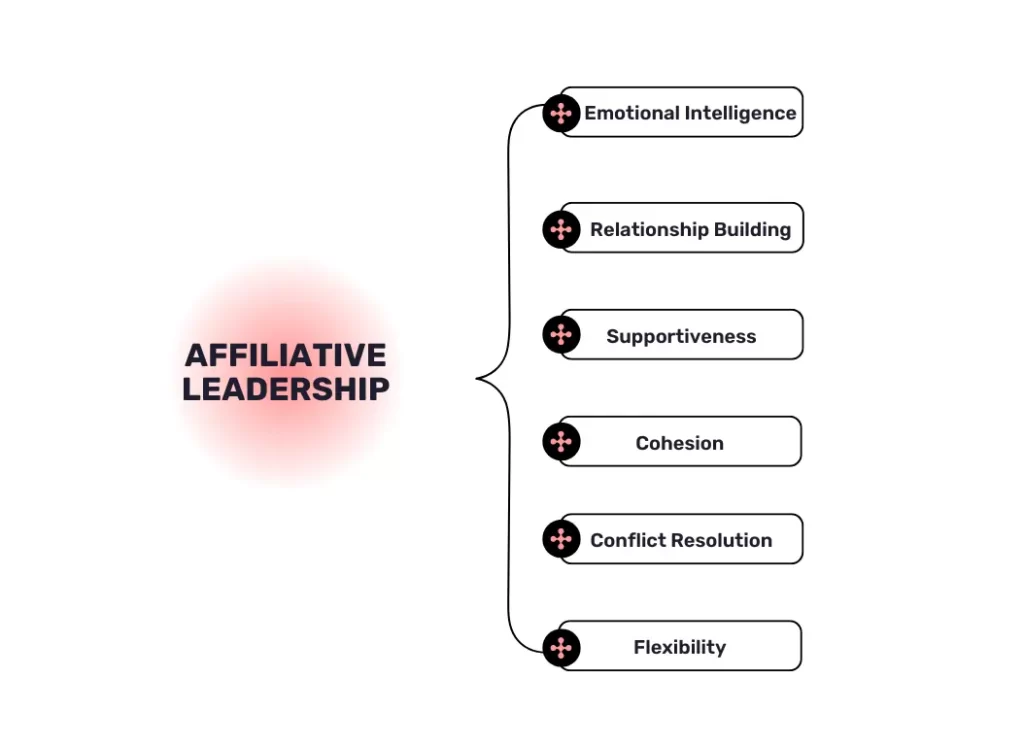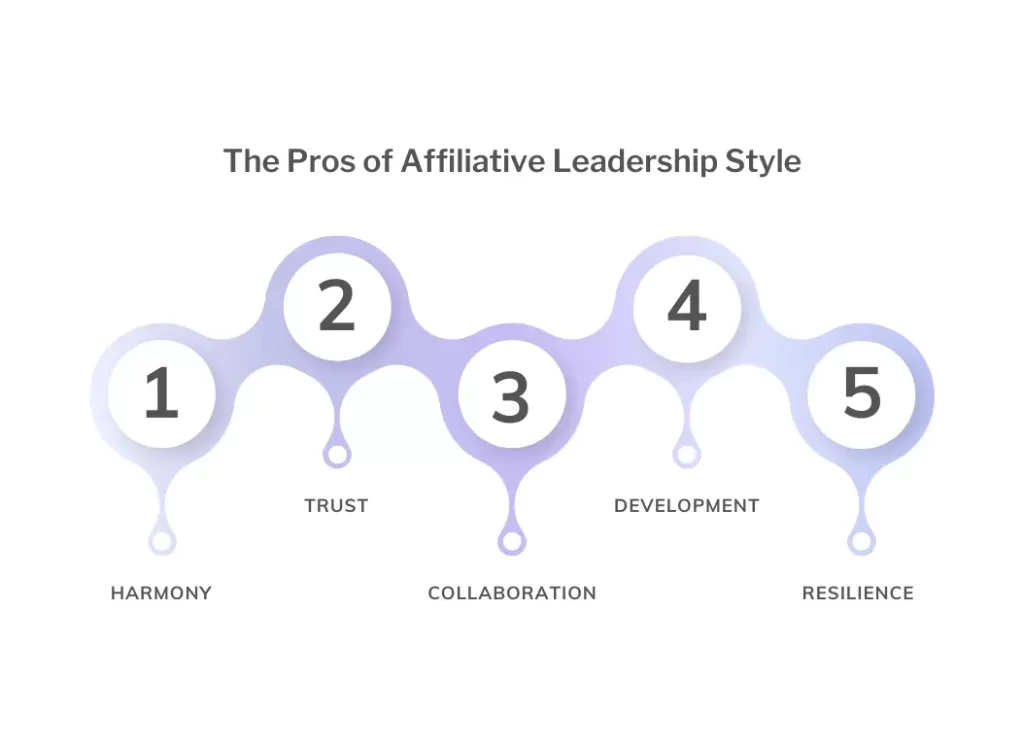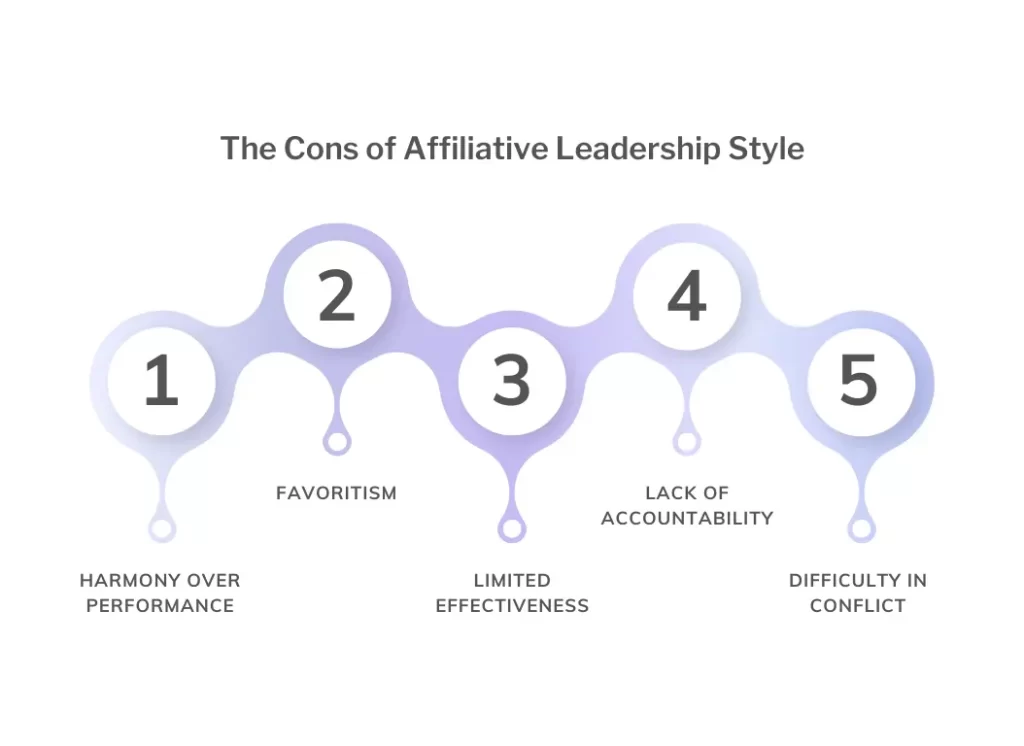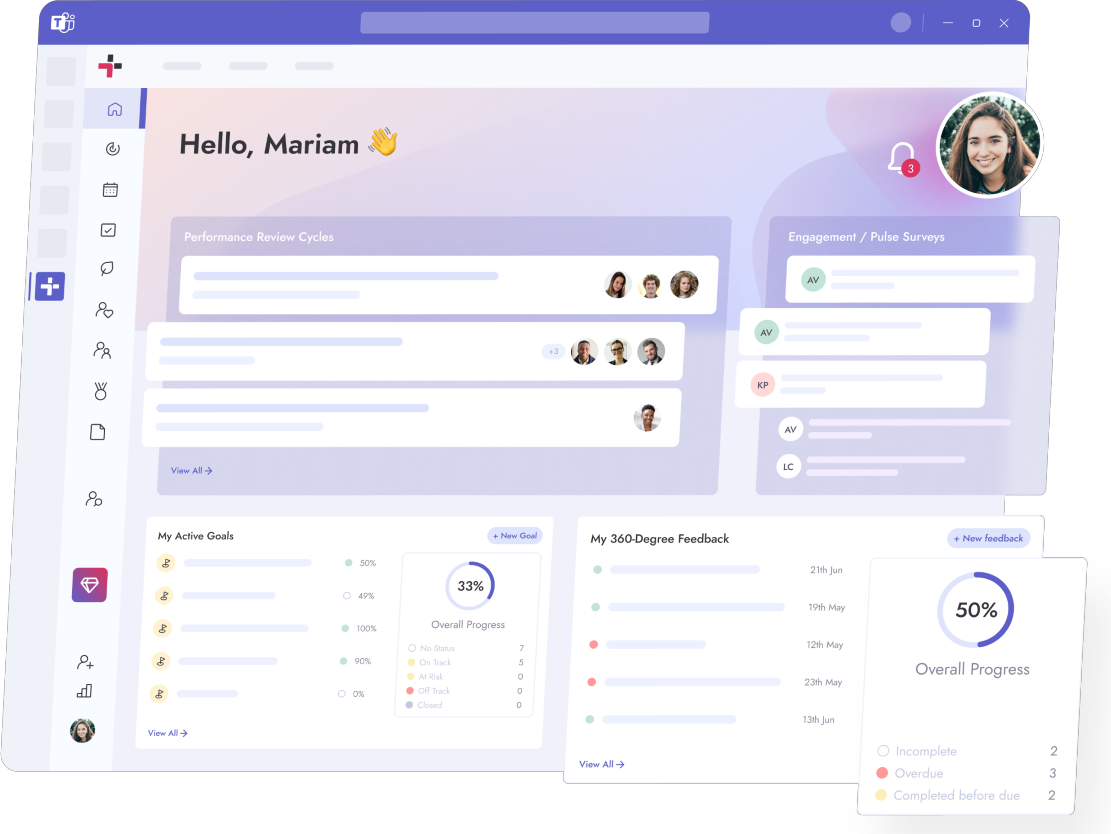In the modern world, organizational success relies on more than just strategies and structures, but also on the strength of interpersonal connections. The affiliative leadership style is just for the entities that need that.
A workplace that flourishes on trust, thrives on collaboration and where the workforce feels that they are valued and recognized for their contributions is very likely to be under affiliative management. This style’s vision highlights empathy, compassion, and an understanding of individual development in the workplace.
Let’s take a closer look into how affiliative leadership works, its definition in detail, the characteristics it embodies, and more!
Table of Contents
What is the Affiliative Leadership Style At Work?
The affiliative leadership style is one that strongly focuses on interpersonal relationships and believes in the power it brings to the organization. By their nature, affiliative leaders tend to include and support their workforce, creating a sense of belonging and fostering creativity.
Leaders who adopt such an approach are likely to prioritize the emotional well-being of their employees and would want to see their team thrive via a cohesive and harmonious work culture in the organization.
Overall, similar to the democratic leadership style, this leadership style is highly invested in building well-established relationships that will contribute greatly to the achievement of organizational goals and long-term success through an empowering, positive work culture with a strong emotional connection within the team dynamic.
In this sense, affiliative leadership can be categorized as a type of transformational leadership. Transformational leadership is a type of management approach that inspires and motivates employees to achieve extraordinary success. The vision, value, and purpose are to create a shared mission and commitment to it.
According to an article on ScienceDirect, transformational leader practices influence the people they lead to achieve goals, as well as increase their confidence, commitment, and job performance, which in turn contribute greatly to the success of the organization. This is exactly why affiliative leadership is a type of transformational leadership style.
The Characteristics of Affiliative Leadership Style

Emotional Intelligence: Affiliative leaders are great at understanding and managing their own emotions and helping regulate their team members’. They show high levels of emotional intelligence, which enables them to empathize with others, building trust, and creating a positive work atmosphere in the process.
Relationship Building: The affiliative leadership style prioritizes building strong relationships with employees which is based on trust, mutual respect, and open communication. Getting to know people in the team and forming real connections with people creates a different level of collaborative workspace.
Supportive Environment: Affiliative leaders establish a supportive and empowering environment where the workforce feels safe to express their ideas, share their concerns if any, and take calculated risks. They provide constructive feedback and encouragement to the people around them, which helps cultivate a positive workplace culture of continuous learning and growth.
Team Cohesion: Affiliative leaders emphasize teamwork and collaboration through personal connections, encouraging a sense of camaraderie among employees. They promote cooperation and collaboration over healthy competition and create opportunities for team building and long-term success at the same time.
Conflict Resolution: Affiliative leaders will highlight being constructive when faced with conflict and are likely to remain calm and steady. They will likely encourage open communication and active listening, seeking win-win scenarios wherever possible in the organization.
Flexibility and Adaptability: Affiliative leaders are flexible in nature and are highly adaptable in their approach, recognizing that different situations may require different strategies to be implemented. They are willing to adjust their leadership style to meet the evolving needs of their team, the organization, and the industry they work in.
The Pros& Cons of Affiliative Leadership Style

Pros
- Promotes Harmony: Affiliative leaders prioritize having a workplace that is positive and collaborates harmoniously. This way the team can feel valued and supported in their contributions, leading to better morale in the organization.
- Builds Trust: Leaders who employ the affiliative approach will demonstrate genuine concern for the well-being of their team and in doing so will foster open communication, and build trust and loyalty within the organization. This will help enhance collaboration and productivity.
- Encourages Collaboration: Affiliative leaders emphasize teamwork and cooperation as a principle. This helps create a workplace where the workforce feels comfortable sharing their ideas and working together towards common goals, fostering creativity and innovation.
- Supports Employee Development: Affiliative leaders invest real time and effort in understanding not only the needs but also the aspirations of their teams, providing personalized support and guidance to help them grow and develop in their careers. This aids increase job satisfaction and retention.
- Enhances Resilience: Affiliative leaders tend to create an overall supportive environment where members feel comfortable expressing any concerns, and seeking help or advice when needed, and this creates a culture of resilience and adaptability within an organization.

Cons
- Risk of Harmony Over Performance: In their goal of maintaining positive relationships, affiliative leaders can avoid addressing any performance issues or making tough decisions that could disrupt the harmony. This can lead to potential underperformance or stagnation within the organization.
- Potential Favoritism: Affiliative leaders can inadvertently show preferential treatment to certain employees or form cliques. This may cause resentment and undermine the trust of other team members, potentially leading to employee disengagement.
- Limited Effectiveness In High-Stress Situations: Even though affiliative leadership is effective in nurturing relationships and building trust normally, it may not be as effective in high-pressure occasions where quick decision-making and assertiveness are necessary. This could potentially hinder the team’s ability to respond effectively and efficiently in certain situations.
- Lack Of Accountability: Affiliative leaders may hesitate to hold team members accountable for their actions or performance for fear of damaging relationships, and disrupting the harmony, leading to a lack of accountability within the organization and potential performance issues.
- Difficulty In Managing Conflict: Affiliative leaders can struggle to address conflicts or confront difficult situations head-on, choosing to instead prioritize maintaining the existing harmony, which can result in unresolved issues and negatively impact team dynamics in the long run.
When and Where Can You Use the Affiliative Leadership Style?
Affiliative leadership style can come in handy for an organizaiton in multiple settings. Let’s take a look at a few.
- Large Organizations: Affiliative leadership can be seen in large organizations often with extensive teams and complex structures. The emphasis on the cultivation of positive relationships and building a sense of belonging can help mitigate the challenges of scale in such cases, promoting collaboration and harmony amongst the workforce across different departments within an organization.
- Creative Industries: Affiliative leadership is a very good match for creative industries such as advertising, design, and media, where collaboration and teamwork are essential elements for generating innovative ideas and producing high-quality work. The nature of nurturing a supportive and inclusive culture helps tremendously to support an environment that creative industries need in order to thrive.
- Nonprofit Organizations: In organizations that are dedicated to serving a cause or community, affiliative leadership can be particularly effective because of its nurturing characteristics. Building strong relationships with volunteers, donors, and stakeholders, is a big part of what a nonprofit needs to do to reach its goals and affiliative leaders can create a sense of shared purpose and commitment, cultivating the necessary support.
- Healthcare: Affiliative leadership can be a valuable asset in healthcare organizations, where teamwork and communication are critical for providing quality care. The prioritization of relationships and the creation of a culture of trust among healthcare professionals, is exactly the kind of management affiliative leaders are equipped for.
- Education: Affiliative leadership can heavily benefit educational institutions such as schools and universities since they’ll be able to promote a positive learning environment and foster strong connections among students, faculty, and staff alike. Building such relationships based on trust and mutual respect is how affiliative leaders can create a supportive atmosphere that enhances engagement and success in an academic setting.
The Best Tool For Affiliative Leaders
Teamflect!
If you want to have a strong tool at work that can help you include and empower your team and communicate efficiently, making valuable connections in your organization, use Teamflect.
Teamflect will assist you with goal setting, delegating and managing tasks, effectively customizing meetings, 360-degree feedback and surveys and so much more. It is an all-in-one performance management solution that will make sure you and your team thrive in the most inclusive and supportive fashion possible!

Teamflect will allow you to;
- Align goal completion rates with subgoals.
- Schedule automated check-ins.
- Use your existing org chart in Microsoft Teams for goal-setting permissions.
- Create manager/admin-only recognition badges to recognize high-performers
- Send private recognitions to celebrate success in confidential projects
Use Teamflect inside Microsoft Teams today and start leading your team effectively, and inclusively and empower them!



